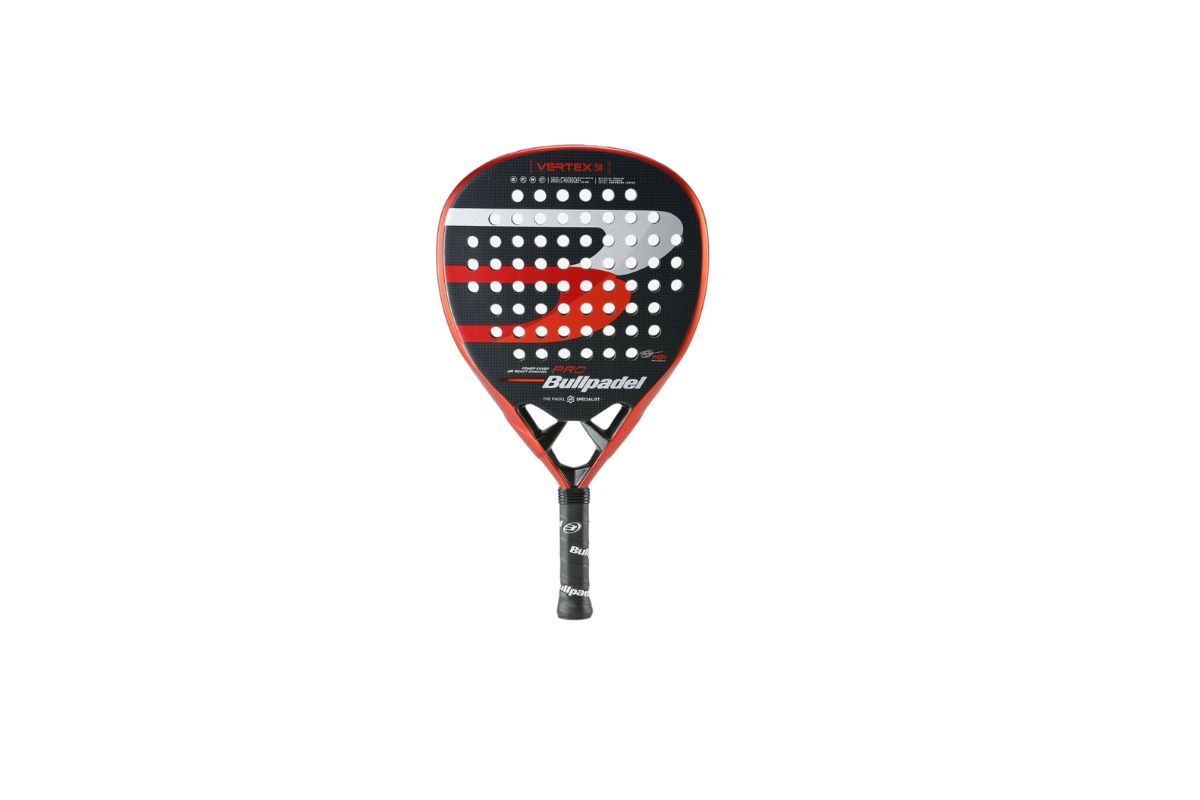Padel equipment: What you'll need to play
What equipment do you need to play Padel? It takes more than just a racquet and shoes to complete your experience on the court. Take a look here!

source: HelloDavidPradoPerucha on Freepik
If you’re ready to try padel, having the right equipment is key to enjoying the game and playing well. Whether you’re a beginner or already know a bit about the sport, choosing the right gear can really make a difference.
But with so many options, what do you actually need to start playing? This article will walk you through all the essentials so you can feel confident and prepared on the court. Let’s get started!
What is padel?
Padel is a fast-paced, fun racket sport that blends elements of tennis and squash. Played on an enclosed court about a third the size of a tennis court, it’s designed to be social and accessible. The main difference between padel and tennis is that in padel, the ball can bounce off the glass walls, adding an extra layer of strategy to the game. You play in pairs, making it perfect for doubles matches.
One of the reasons padel is growing in popularity is that it’s relatively easy to pick up. With its smaller court size and focus on teamwork, it doesn’t require the same level of strength or technique as tennis, which makes it ideal for all ages and skill levels. Plus, the unique combination of quick reflexes, coordination, and strategic play keeps it exciting and engaging for everyone.
Is padel easy to learn?
Yes, padel is generally easy to learn, which is one of the reasons it's gaining so much popularity. The basics of the game—such as hitting the ball, positioning yourself on the court, and understanding the rules—can be picked up quickly, even by beginners.
Unlike tennis, which can take a lot of time to master, padel is more forgiving because the court is smaller, and the rallies tend to last longer. This gives players more time to react and adjust their shots, making it easier to play right from the start.
The best part is that you don't need to be super fit or have advanced skills to enjoy padel. Most newcomers find that they can start having fun after just a few sessions. The key to improving is practice, but even as you learn, the game remains enjoyable.
What equipment do you need to play padel?
To play padel, you'll need a few essential items that will help you perform your best on the court. Let’s go over what you’ll need in more detail.
- Padel racket: These rackets are quite different from what you might see in tennis. They are smaller, solid, and have no strings, making them easier to handle for beginners. The racket’s surface is perforated with holes, which helps give you more control and precision when hitting the ball. As a beginner, it’s best to choose a lightweight racket that’s easy to maneuver, which will help you get used to the game more quickly.
- Padel balls: While they look similar to tennis balls, there’s a key difference—they are slightly smaller and have less internal pressure. This lower pressure makes the ball easier to control, especially on padel’s smaller, enclosed court. Padel balls are specifically designed to complement the fast-paced yet strategic nature of the game.
- Padel shoes: Footwork is crucial in padel, so having the right shoes can make a big difference. You need shoes with good grip and lateral support since padel involves quick movements and sudden changes in direction. Padel-specific shoes are the best option, but if you’re just starting, tennis shoes with strong support will work too.
The best padel rackets

source: Bullpadel
When it comes to choosing the best padel racket, it’s important to consider your skill level, playing style, and comfort. Padel rackets come in various shapes, materials, and weights, each offering a different advantage depending on how you play.
For beginners, round-shaped rackets are often the best option. These rackets offer a larger sweet spot, making it easier to hit the ball with control and precision. They are generally lightweight and provide good maneuverability, perfect for players who are still developing their technique.
Intermediate and advanced players may prefer teardrop-shaped rackets or diamond-shaped rackets. Teardrop rackets provide a balance between power and control, making them ideal for players looking to improve their game. Diamond-shaped rackets, on the other hand, are designed for players who prioritize power. These rackets have a smaller sweet spot and are heavier, so they require more precision and strength but reward the player with stronger hits.
The material of the racket also matters. Rackets made from carbon fiber are more durable and provide better performance, while those made from fiberglass are more flexible and forgiving, making them a good choice for beginners who need extra control.
Brands like Babolat, Bullpadel, and Adidas are known for producing high-quality padel rackets. Each brand offers a range of models suited to different skill levels, so it’s worth trying out a few to find what feels best in your hand.
The best padel balls

source: Babolat
When it comes to choosing the best padel balls, quality and durability are key factors. Unlike tennis balls, padel balls are specifically designed to suit the smaller court and unique playing dynamics of the game. While they may look similar, padel balls have slightly less pressure, which allows for longer rallies and more controlled gameplay.
One of the top brands to consider is Head, which produces high-quality padel balls known for their consistent bounce and durability. Their balls are widely used in tournaments and are a great choice for both beginners and advanced players. Another popular option is Babolat, which offers balls that are designed for longer-lasting performance, perfect for players looking to maximize their practice sessions without wearing down their equipment too quickly.
The best padel shoes

source: K-Swiss
Choosing the best padel shoes is crucial for improving your performance on the court and preventing injuries. Since padel involves a lot of quick movements, lateral steps, and sudden stops, having the right footwear that provides grip, support, and comfort is essential.
When looking for padel shoes, one of the key features to prioritize is grip. Shoes with excellent traction will help you move swiftly across the court without slipping. Brands like Asics and Adidas offer shoes with durable soles designed specifically for padel’s unique surface. Their outsoles are often made with a herringbone pattern, which provides superior grip and helps with quick direction changes.
Another important factor is lateral support. Padel involves a lot of side-to-side movement, so shoes with reinforced sides and strong ankle support are ideal. K-Swiss is a brand known for offering padel shoes that combine both grip and lateral support, making them a favorite among players looking for stability and protection.
Comfort also plays a big role in finding the best padel shoes. You’ll want a pair that cushions your feet, especially if you play for long periods. Nike has several models with advanced cushioning technologies that absorb impact while keeping the shoes lightweight and breathable, making them great for extended matches or practice sessions.
Conclusion
In conclusion, having the right equipment can make a significant difference in your padel experience, whether you’re just starting out or already a seasoned player. From choosing the right racket that suits your skill level to selecting durable balls and comfortable shoes, each piece of gear plays an important role in your performance and enjoyment on the court. Investing in quality equipment not only helps improve your game but also reduces the risk of injury and enhances your overall experience.
Remember, padel is a sport that’s meant to be accessible and fun. With the proper equipment, you’ll feel more confident and prepared, allowing you to focus on what really matters—enjoying the game. So, grab your racket, lace up your shoes, and get ready to hit the court with everything you need for a great match!
FAQ
1. Do I need special equipment to play padel?
Yes, you’ll need a padel-specific racket, padel balls, and shoes designed for court sports. Padel rackets are different from tennis rackets, and padel balls have less pressure than tennis balls, making them easier to control. Proper shoes with good grip and support are important for preventing injuries and enhancing your movement on the court.
2. What’s the difference between padel and tennis rackets?
Padel rackets are smaller, solid, and have no strings, unlike tennis rackets. They are made from durable materials like carbon fiber or fiberglass and have perforations that help with control and precision. Tennis rackets, on the other hand, have strings and are typically larger and lighter.
3. Can I use regular tennis shoes for padel?
While you can use tennis shoes, it’s better to choose shoes specifically designed for padel or shoes with excellent grip and lateral support. Padel involves a lot of side-to-side movements, so having shoes with strong lateral support and good traction will help you play more effectively and prevent injuries.
4. What type of padel racket is best for beginners?
Beginners should start with a round-shaped padel racket because it offers a larger sweet spot, making it easier to control and hit the ball. Lightweight rackets are also ideal for beginners as they provide better maneuverability and help build confidence.
5. How much should I invest in padel equipment?
It depends on your level of play. Beginners can start with more affordable options, especially for rackets and shoes, while intermediate and advanced players may want to invest in higher-quality gear for better performance. In general, you can expect to spend between $50 and $300 on a good padel racket, with shoes and balls adding to the overall cost.
6. Is there a difference between men's and women's padel equipment?
In general, padel equipment is not gender-specific. However, some brands offer variations in racket weight, grip size, or shoe designs that cater to personal preferences. The best equipment for you will depend on your style of play, comfort, and skill level.
.jpg)
